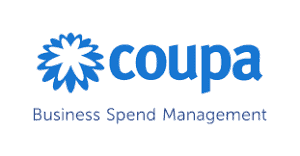Crude oil has Increased 80% Since February! – So What Action Did You Take?
Since crude oil prices collapsed in February 2016 to their lowest point in recent years, crude has been making a very steady recovery. This morning WTI was over $48 bbl up 80% from its low just a little over three months ago. Oil inventories are in decline for a second week, partly demand-driven and partly supply, thanks to Nigeria’s unplanned outages – there seems little to stop $50 oil in the next few weeks.
Observers will note that while this increase did not happen overnight, it has occurred in a relatively short space of time. This price creep is quite common in recovering markets and has been observed several times in the last 15 years.
Crude oil is not alone on its upward journey. While natural gas is also driven by supply and demand fundamentals, (currently a considerable oversupply), it has also risen, from mind-blowing lows of $1.63 dth in early March. The current levels of $2.05 dth represent a .40c dth increase – that’s over 25%!
So, with so much opportunity at stake, I am compelled to ask what action did you take over the last 90 days?
The interesting thing for me is that large energy consumers rarely have the tools or strategies in place, or even available to them to take advantage of this volatility. I say interesting, but considering how this is far from the first cycle like this – it is astonishing.
Not being able to manage energy volatility seems to be accepted. Large consumers manage it by arbitrarily fixing contract volumes in whole or in part. If their product price links heavily to the commodity, they will float on the index. Both without the proper measurement and control mechanisms are inherently risky.
If your position has volumes yet to be fixed and exposed to the market, the marked to market position is easy to figure out. Forecast volume x Market Price. The problem here is that if you are trying to follow a strategy, you are always behind the curve in terms of price – you become a reactive price taker.
The critical failure of these strategies is they lack an additional metric – Value at Risk. For over 15 years’ energy, consumers have been using this metric to significant effect. By setting a risk limit (the $ amount you can risk by not fixing everything) and measuring the daily change in risk value, you have a mechanism that acts as a trigger.
If the risk of you passing your risk threshold is present, you take action. This will keep your transaction process aligned with your strategy and save any embarrassing conversations with your finance team. As markets drop, risk limits reset, and as they rise, you begin fixing volumes to keep you not just safe – but ultra-competitive.
These very flexible strategies have operated in Europe for almost 20 years. They have successfully helped commercial energy consumers to avoid utility price increases linked to crude oil movements and instead actively manage their buying decisions within a controlled dynamic risk management strategy.
Right now, with natural gas, even after a 25% increase, still far from the $13 dth levels of a few years ago, large energy consumers have yet to feel the pain. That will change the oversupply forecast to be back in balance by the end of this year – just in time for winter! The question is, are you willing to keep doing what you’ve always done, or build a strong foundation for competitive growth?
If you don’t yet have a strategy to measure and manage your risk, it’s not too late.
As dynamic risk management pioneers for C&I energy consumers, Vervantis can help manage price volatility and gain the competitive edge – contact us today for more information or call: 1-888-988-5474











